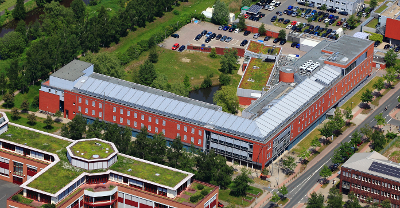← students

| First name: | Angélique |
| Last name: | Gobet |
| Country: | France |

Thesis Subject:Seasonal dynamics of microbial communities on coastal sediments of the North Sea island Sylt
| Education: | |
| 2005-2006
Master Degree Oceanography and Marine Environment, University Paris VI, France -2006:"Protists of the deep-sea hydrothermal vents",Biological station of Roscoff -2005:"Interactions between ciliates and appendicularian",Oc. Obs. Villefranche-sur-mer |
|
| 2004-2005
Master(1st year)Oceanography and Marine Environment, University Paris VI, France -2004:"Algal succession : role of grazers and physical stress", MBA of the UK, Plymouth, United Kingdom -2004:"Biology and Ecology of Plankton", OOV, France |
|
| 2003-2004 Bachelor(3rd year)about Biology of organisms, University Paris VI, France | |
| 2002-2003 Bachelor(3rd year)about general biology and geology, University Paris VI, France | |
| 2000-2002 Bachelor(1st two years)about general biology and geology, University of Le Havre, France | |
| 1999-2000 First year of Classe préparatoire aux grandes écoles(First year of school for engineers)about Biology, Chemistry, Physics and Geology, Lycée Chaptal, Paris, France |
Scientific Interests and Goals: The coastal zones of the ocean are highly productive ecosystems, which despite their relatively small area, play an important role on the global cycles of carbon and nitrogen. Biodiversity and species composition are changing at an increasing rate due to coastal development, eutrophication, pollution, exploitation, species introduction and possibly global warming. Hence, a thorough understanding of the transport processes, material flows and biodiversity within these ecosystems is needed. This project will focus on coastal areas of the North Sea island Sylt, where long-term studies on environmental parameters are available. Special features of this coastal ecosystem are the substantial seasonal changes in light availability and temperature, the impact of storms, the strong pelagic phytoplankton bloom in spring and a high microphytobenthic biomass throughout the year. These patterns lead to strong seasonal dynamics in environmental parameters and possibly microbial diversity. Moreover, we are especially interested in understanding the association between bacteria and diatoms in coastal sands and waters.
First, the aim is to determine how these seasonal dynamics influence patterns of activity, distribution and composition of microbial communities in coastal seas. Then, more precisely, to see at which taxonomic level a pattern could be observed. So, we need to identify the ARISA bands obtained from a previous study. Here we use the ARISA approach, linking obtained bands to 16S-ITS rDNA phylogeny.
First, the aim is to determine how these seasonal dynamics influence patterns of activity, distribution and composition of microbial communities in coastal seas. Then, more precisely, to see at which taxonomic level a pattern could be observed. So, we need to identify the ARISA bands obtained from a previous study. Here we use the ARISA approach, linking obtained bands to 16S-ITS rDNA phylogeny.


